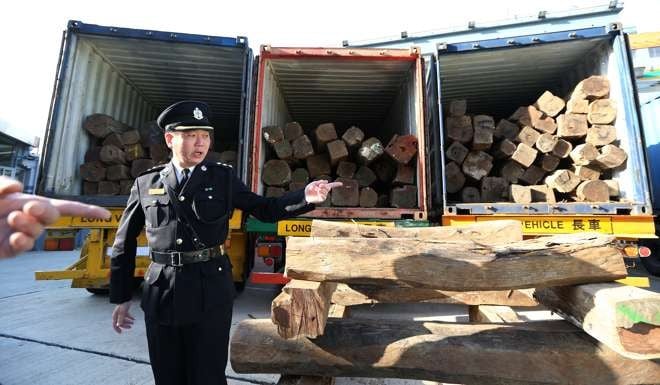
How the battle to axe the illegal timber trade is being won
John Scanlon says the success of Cites in helping to ensure legal and sustainable global trade in timber indicates the benefits of a limited but well-targeted approach
On January 2, new rules related to the Convention on the International Trade in Endangered Species of Wild Fauna and Flora (Cites) take effect, bringing hundreds of additional timber species under its legally binding global trade controls.
100-fold rise in seizures of illegal ‘red gold’ timber

Hong Kong customs seizes 92 tonnes of endangered rosewood
In 2013, certain highly valuable rosewood species were brought under Cites controls. Such trade now needs Cites permits, and is only allowed when range states, or countries within the natural range of distribution of a species, have made a scientific “non-detriment finding” and determined that the timber was legally acquired.
National Cites Scientific Authorities are now working on sustainability issues and customs officials demanding Cites permits for all such international shipments. As a result, there is a fresh impetus to determine what constitutes a sustainable harvest, and a surge in seizures of illegally traded rosewood, estimated by the UN to now represent 35 per cent of the global value of wildlife seizures, far higher than elephant ivory and rhino horn combined.

Hong Kong and China must close the door on import of illegal timber
Application of this legal instrument to international trade in timber species has been steadily growing, going from 18 in 1975 to 300 in 2010, and over 900 in 2016.
Perhaps it is time to reflect on the success, or otherwise, of all-encompassing approaches to wildlife conservation that blend national and global issues, and to see the benefits of more limited, well-targeted, interventions; or we run the risk of overwhelming international processes with issues not demanding cross-border cooperation and deflecting effort from where it matters most.
John E. Scanlon is secretary-general of Cites
